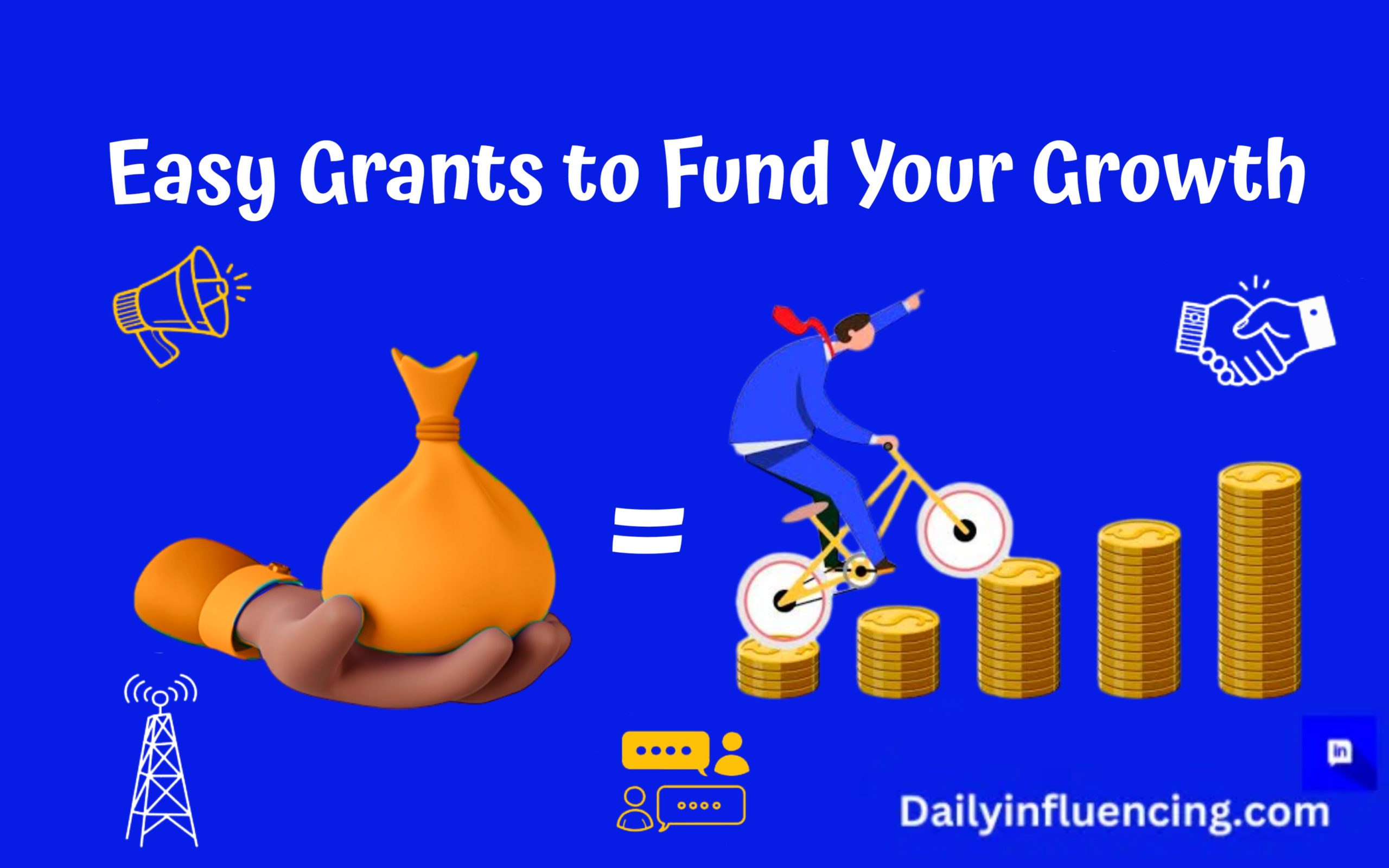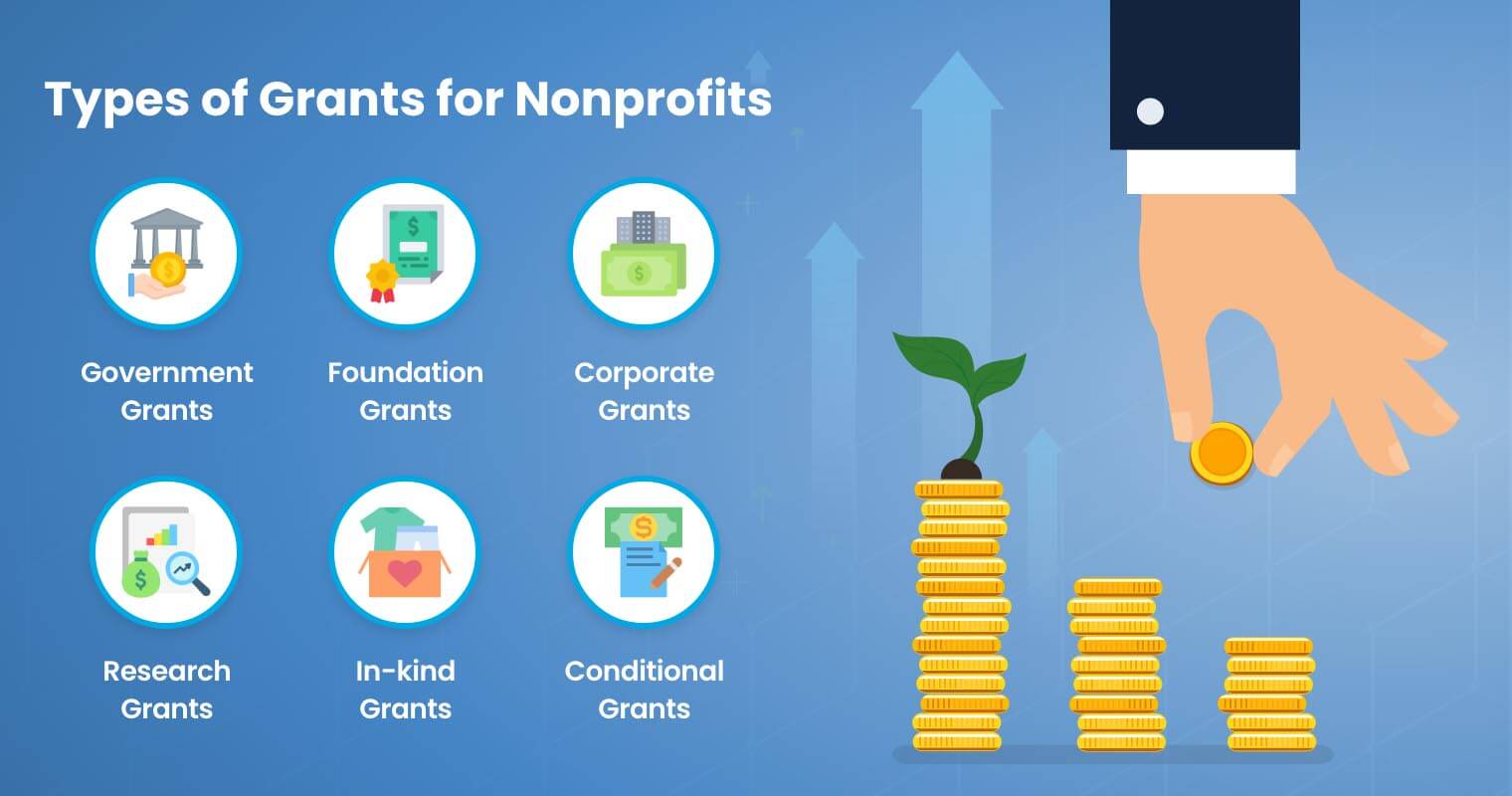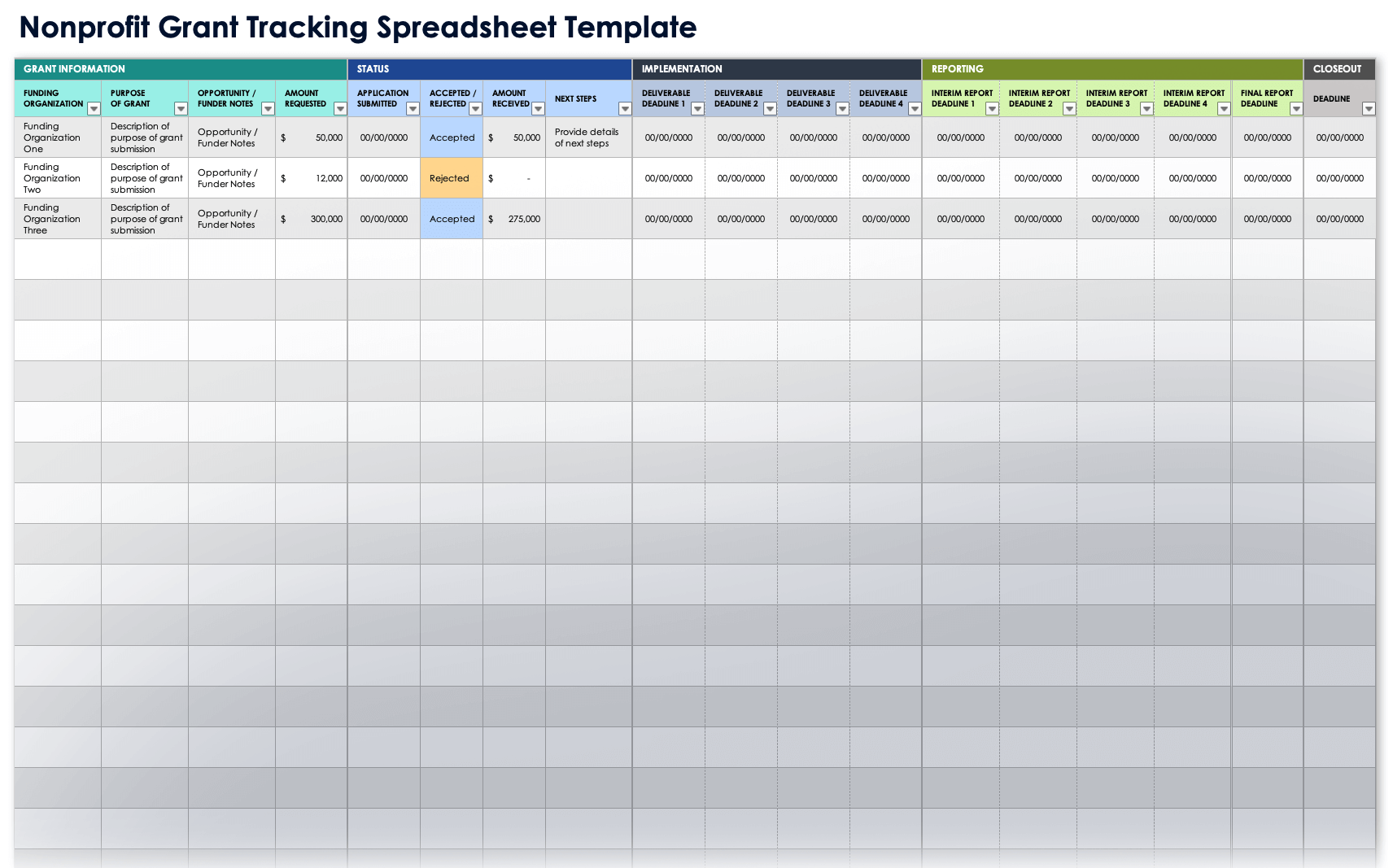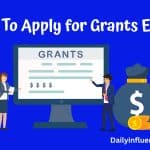
Securing adequate funding remains one of the greatest challenges for nonprofit organizations in 2025. According to the National Council of Nonprofits, over 60% of organizations identify sustainable funding as their primary concern! While individual donations and fundraising events form the backbone of nonprofit financial strategies, grants for nonprofits represent a significant and often untapped resource.
Whether you’re a grassroots organization or an established nonprofit, understanding how to navigate the complex terrain of grant funding can transform your operational capacity and programmatic impact.
This article will walk you through the essential steps to find, apply for, and secure grants that align with your mission.
What Exactly Are Nonprofit Grants?
Nonprofit grants are free money organizations don’t have to pay back. They’re not “no strings attached” kind of deals. These funds come from foundations, corporations, and government agencies that want to support causes aligned with their mission.
At first, I thought grants were just about filling out some paperwork and waiting for a check. Grant funding is actually a relationship-based exchange where funders invest in organizations they believe will create meaningful change.
Think of grants as partnerships, not handouts. Funders are looking for nonprofits that can prove they’re making an impact and managing resources effectively. They’re investing in your mission, and they expect results.
Types of Nonprofits Grants Available
The grant environment is way more diverse than most people realize. Each type serves different purposes:
- Program grants support specific initiatives or services. These are perfect when launching new programs or expanding existing ones. They typically cover direct costs associated with delivering services to your community.
- General operating grants are the unicorns of the funding world—harder to find but incredibly valuable. These funds can be used for day-to-day expenses like rent, utilities, and staff salaries. I’ve seen organizations transform with this type of flexible funding.
- Capacity-building grants help strengthen your internal systems. Maybe your database is from the stone age, or your staff needs professional development. These grants help build your organizational muscle.
- Capital grants fund major purchases or facility improvements. Need a new building or major equipment? These grants get you covered, though they often require matching funds.
- Research grants support data collection and analysis related to your field. These are particularly valuable for organizations working to develop evidence-based approaches.
Why Grants Matter for Your Nonprofit’s Sustainability
Over the years, I’ve seen too many organizations survive month-to-month, constantly in panic mode about making payroll. Grants can dramatically change this scenario by providing larger sums of predictable funding.
Grants allow you to plan ahead with confidence. When you know you’ve secured a $50,000 grant for the next two years, you can make strategic decisions rather than reactive ones.
But here’s the catch—relying solely on grants is dangerous. The nonprofits that thrive maintain a healthy mix of individual donors, earned income, and grant funding. Recovery from a grant refusal can be brutal, especially when you’ve lost a lot in one year
Grant funding also adds credibility to your organization. When major foundations or government agencies fund your work, other donors take notice. It signals that your programs have been vetted by discerning funders who see value in your approach.
Let’s delve deep into the six ways anyone, either an individual or an organization, can secure nonprofit grants in 2025
Step 1: Assessing Your Nonprofit’s Grant Readiness
You know that feeling when you spot the perfect grant opportunity but suddenly realize your organization isn’t prepared to apply? Been there! Before jumping into the competitive world of nonprofit grants, you need to make sure your foundation is rock solid.
Getting Your Organization Grant-Ready
First things first, your nonprofit’s legal status needs to be squeaky clean. I discovered this through trials and errors when our 501(c)(3) paperwork wasn’t properly filed, and we missed out on a $25,000 grant opportunity. Double-check that your tax-exempt status is current and that all required filings are up-to-date. Grant funders will absolutely verify this, and many won’t even look at your application if there are any issues.
Your financial management systems gotta be in order too. Most grants for nonprofits require detailed financial reporting, and funders want evidence that you can responsibly manage their money. By upgrading your accounting software you can make a world of difference in tracking restricted funds and generating the reports that grantmakers love to see.
One thing that separates successful grant recipients from the rest is having crystal-clear, measurable outcomes. Vague statements like “helping the community” won’t cut it. Instead, you need specific measurable metrics: “Providing job training to 150 low-income residents resulting in 85 securing employment within six months.” These concrete outcomes show funders exactly what their grant dollars will accomplish.
Take a hard look at your staff capacity too. Writing grant proposals, implementing funded programs, and completing all those reports takes significant time and expertise. Most small nonprofit organizations always try to manage cash flow and almost everything with existing staff, which can sometimes lead to burnout and mediocre applications.
Important Organizational Documents to Prepare
Creating a budget-friendly grant-ready document library has saved us countless hours. When a grant application asks for your mission statement, program descriptions, or board information (and they all do), you’ll have everything at your fingertips.
Budget templates are important for nonprofit grant applications. We’ve developed standardized formats that can be quickly customized for different funders, ensuring accuracy and consistency. This approach has dramatically reduced errors that could otherwise disqualify your application.
The most compelling grant proposals balance data with storytelling. Compile testimonials and success stories that bring your impact to life. By adding success stories on how you helped people and the community achieve common goals, you’re sure to get a high success rate in your application process.
Your strategic plan might be gathering dust on a shelf, but grant funders want to see it. They’re investing in your future, not just your present. Our three-year plan demonstrates how we’ll grow sustainably and continue making an impact long after their funding ends. This has been particularly effective with foundation grants for nonprofits focused on organizational capacity building.
Step 2: Researching Grant Opportunities for Nonprofits
Finding the right grants for your nonprofit can feel like searching for a needle in a haystack, and spending countless hours scrolling through databases only to find opportunities that weren’t quite right for our mission was a complete waste of time. But over the years, I’ve developed a system that’s saved our team tons of time and dramatically improved our success rate.
Where to Look for Nonprofit Grants
The grant landscape is vast, but you don’t need to wander seamlessly. Start with specialized grant databases that do the heavy lifting for you. Foundation Directory Online has been my go-to resource for years – it’s worth every penny of the subscription fee. For government funding, Grants.gov is absolutely necessary, though I’ll warn you it can be a bit clunky to navigate at first. Don’t overlook GrantWatch either!
Community foundations are gold mines that many nonprofits overlook. They typically have a deeper understanding of local needs and often provide more accessible funding for smaller organizations. When starting out, a $5,000 grant from a local community foundation can give you credibility with other funders.
One growth strategy that’s worked amazingly well for is analyzing who funds similar organizations in your space. Annual reports and the “thank you” pages on websites of nonprofits similar to yours can reveal potential funders you hadn’t considered. You can secure nearly $50,000 by simply researching who supported organizations with comparable missions to yours.
How to Evaluate Grants for Nonprofits Opportunities
Not all grants are created equal, and applying for everything under the sun is a recipe for burnout. You gotta be strategic about where you invest your time.
First, check if there’s genuine alignment between what the funder wants to support and what your organization actually does. It’s tempting to try to twist your programs to fit a funding opportunity, but that approach rarely works out well in the long run.
Review the average grant amounts too. Is it worth spending 40 hours on an application for a $2,000 grant? Sometimes yes, especially if it opens doors to larger funding later, but be realistic about the return on investment.
Look at who’s received funding from this source before. If they exclusively fund large universities or established organizations with multi-million dollar budgets, and you’re a small grassroots nonprofit, you might be better off looking elsewhere.
Overcoming Geographic Restrictions in Grant Application
Geographic restrictions trip up many organizations. I still remember the disappointment of finding the perfect grant opportunity, spending days on the application, only to discover in the fine print that they only fund organizations in three specific counties—none of which were ours.
The most successful nonprofits don’t just apply randomly but they build a strategic grants calendar that maps out deadlines, requirements, and potential funding amounts. This approach has helped us increase our grant revenue by 65% over the past two years by ensuring we never miss an important deadline and always have time to prepare quality applications.
Step 3: Crafting Compelling Grants for Nonprofits Proposals
Writing grant proposals isn’t just about filling in boxes—it’s about telling a powerful story that makes funders want to join your mission. After submitting over 100 applications for nonprofit grants, I’ve learned what makes the difference between getting funded and getting rejected.
Elements of a Winning Grant Proposal
The executive summary might seem like a formality, but it’s actually the most critical component of your entire proposal. Many reviewers only read this section before deciding whether to continue. We’ve completely revamped our approach to executive summaries, making them more concise and compelling, and our success rate with larger federal grants for nonprofits has improved significantly.
When defining community needs, specificity is your best friend. Rather than stating “Many children in our area are struggling academically,” provide exact figures: “47% of third-graders in our district are reading below grade level, compared to the state average of 29%.” This level of detail shows funders you’ve done your homework and truly understand the problems you’re addressing.
Strengthening Grant Applications With Clear Methodology and Budgeting
The methodology section is where many nonprofit grant proposals fall short. Don’t just say what you’ll do—explain how you’ll do it, when you’ll do it, and why your approach works. Our after-school literacy program proposal included a week-by-week implementation timeline, research supporting our curriculum choice, and staff qualifications. The funder later told us this level of detail gave them confidence in our ability to execute effectively.
Your budget shouldn’t be thrown together last minute. I’ve seen fantastic program descriptions paired with poorly thought-out budgets that tanked otherwise promising applications. Make sure every expense is justified and realistic. When applying for capacity-building grants for nonprofits, we include quotes from vendors and specific salary information to demonstrate that our numbers are based on reality, not wishful thinking.
Making Your Grants for Nonprofit Proposal Stand Out
Incorporating stories has transformed our grant writing success. When we shared 12-year-old Jason’s journey from struggling with math anxiety to winning his school’s math challenge after participating in our program, reviewers could see the human impact behind our statistics.
Visual elements catch the reviewer’s eye in a sea of text-heavy proposals. We now include simple charts showing the correlation between our intervention and improved outcomes. These visual representations of data make our impact immediately clear, particularly effective for corporate grants for nonprofits where business-minded reviewers appreciate this approach.
Anticipating Challenges to Strengthen Your Grant Application
Always address potential challenges proactively. Every program faces obstacles, and pretending otherwise makes you look naive. When we acknowledged the transportation barriers many of our clients face and outlined our solution (a partnership with a local rideshare company), the funder specifically mentioned this foresight as a reason for approving our request.
The secret sauce in successful grant proposals isn’t just what you say—it’s how you say it. Use language that reflects your passion while remaining professional. And whenever possible, use the funder’s own language and priorities in your narrative. When they see their mission reflected in yours, the chances of securing those essential nonprofit grants increase dramatically.
Step 4: Building Relationships with Grant Funders
Securing grants for nonprofits isn’t just about paperwork and proposals. In reality, relationships often make the difference between getting funded and getting rejected. Throughout my fifteen years in the nonprofit sector, I’ve learned that connecting with funders personally can completely transform your grant success rate.
The Human Side of Grant Funding
First and foremost, it’s important to research the actual people behind the funding decisions. To put it plainly, program officers hold significant influence over which nonprofit grants get approved. As a result of doing our homework on key decision-makers, we’ve been able to tailor our communications more effectively. For instance, we discovered that our regional foundation’s program officer had a background in education, which helped us frame our after-school program in terms that resonated with her professional experience.
Furthermore, attending funder briefings and webinars provides invaluable insights you simply can’t get elsewhere. I still remember feeling hesitant about attending a technical assistance workshop for a government grant program – it required a full day away from the office, after all. Nevertheless, the insider tips we gained directly from the federal program officer saved us countless hours of work and ultimately led to a successful $175,000 grant for our nonprofit.
Leveraging Funders’ Insights to Improve Your Grant Application
Beyond formal events, don’t underestimate the value of informational meetings. In contrast to common belief, many funders are willing to talk with potential applicants before submission. In fact, after scheduling a 30-minute call with a foundation’s program officer, we completely restructured our approach based on her feedback. Consequently, we secured funding when we had previously been rejected twice.
Despite your best efforts, you won’t win every grant. However, how you respond to rejection can set the stage for future success. Instead of simply moving on to the next opportunity, we’ve made it a practice to thoughtfully follow up after receiving decisions – regardless of the outcome. To illustrate this point, when we were declined for a corporate foundation grant, we requested feedback and used those insights to strengthen our next application. Not only did we receive funding in the next cycle, but the program officer also mentioned how impressed they were with our responsiveness to their suggestions.
Nurturing Funder Relationships
Once you’ve established initial connections, maintaining those relationships becomes just as important. In addition to formal reports, consider sharing meaningful organizational updates throughout the year. For example, we send quarterly email updates to all our funders highlighting program milestones and participant successes. As a result of this consistent communication, several funders have actually approached us about additional funding opportunities before we even applied.
Additionally, inviting funders to witness your work firsthand can strengthen their commitment to your cause. Despite our initial nervousness about having funders observe our programs “in the wild,” these visits have become powerful opportunities to demonstrate our impact. In particular, when representatives from a local foundation attended our youth showcase event, they were so moved by the participants’ presentations that they increased our funding by 30% the following year.
Building Lasting Partnerships With Grants for Nonprofits Organization
Recognition also plays a vital role in funder relationships. Not only should you acknowledge grants in your annual reports and website, but also be mindful of each funder’s preference regarding public recognition. To clarify, some foundations prefer prominent logo placement, while others appreciate more subtle acknowledgment. By respecting these preferences, you can build stronger partnerships with organizations providing grants for nonprofits in our region.
Most importantly, shift your perspective to view funders as true mission partners rather than just sources of money. In the long run, this mindset leads to more authentic relationships and sustainable funding. To emphasize this point, we now include regular updates on both successes and challenges with our closest funders, creating transparent partnerships that have resulted in more flexible funding arrangements when we’ve needed to adapt our programs.
Step 5: Managing Nonprofit Grants and Reporting
After the excitement of securing nonprofit grants settles, the real work begins: responsible stewardship of those funds and thorough reporting on your results. In my experience, this phase determines whether you’ll be a one-time recipient or develop long-term funding relationships.
Effective Grant Application Management Systems
To begin with, implementing proper financial tracking systems is non-negotiable. Above all else, funders expect your nonprofit to handle their money exactly as promised. For this reason, separate accounting codes are developed for each grant, ensuring expenses are tracked against the specific budget approved by each funder. As a consequence of this careful monitoring, we’ve been able to provide accurate financial reports that build trust with grantmakers.
In addition to tracking systems, adhering to approved budgets is absolutely critical. However, programs rarely unfold exactly as planned. On several occasions, we’ve needed to redirect funds based on emerging needs. In such cases, the key lesson learned during the process is to communicate proactively with funders before making changes. For example, when transportation costs unexpectedly increased mid-grant, we requested budget modification permission from the funder rather than simply overspending that line item. Not only did they approve our request, but they also appreciated our transparency.
Enhancing Grant Application With Impactful Reporting
Meanwhile, documenting program implementation goes beyond simple financial tracking. Therefore, it is necessary to develop comprehensive systems to capture both quantitative metrics and qualitative outcomes. To illustrate, our youth mentoring program tracks not just attendance numbers and hours of service, but also collects periodic assessments, participant testimonials, and case notes from mentors. Subsequently, these rich data sources provide compelling material for grant reports that demonstrate genuine impact.
Submitting timely reports is perhaps the simplest yet most overlooked aspect of managing grants for nonprofits. Despite tight schedules and competing priorities, we’ve made grant reporting deadlines sacred on our organizational calendar. In contrast to rushing last-minute submissions, we begin gathering information weeks before reports are due. After implementing this approach, we’ve eliminated the stress of deadline scrambles and improved the quality of our reporting significantly.
Creating Effective Grants for Nonprofits Reports
Beyond mere compliance, effective grant reports are powerful tools for future funding. In the first place, always align your reporting metrics with what you promised in your application. At the same time, don’t hesitate to share unexpected positive outcomes as well. For instance, while reporting on our literacy program that was funded through a community foundation grant for nonprofits, we included both the promised reading level improvements and unexpected gains in participants’ science comprehension.
Making Grant Application More Impactful With Storytelling
Additionally, combine data with compelling stories to bring your impact to life. Although funders require concrete numbers, the human stories behind those statistics create emotional connection to your work. To demonstrate this balance, our reports typically include both program-wide metrics and 2-3 specific participant stories (with appropriate privacy protections). As a result of this approach, multiple funders have directly commented on how our reports help them understand the real-world impact of their nonprofit grants.
Visual documentation can dramatically enhance your reporting. Notwithstanding privacy considerations, appropriate photos, videos, or even simple charts can make your results more tangible to funders. In particular, we’ve found that before-and-after visuals of community spaces, participant artwork, or data visualizations have made our reports more engaging and memorable.
Equally important is honesty about challenges faced during implementation. Rather than glossing over difficulties, acknowledge them directly and explain how you’ve addressed or learned from them.
Finally, always connect your grant-funded work back to your broader mission. Therefore, conclude reports by showing how this specific project advances your organization’s overall goals. In essence, this helps funders see how their contribution fits into the bigger picture of change you’re creating together. By following these practices consistently, you’ll not only maintain the existing grants for nonprofits but have also seen several funders increase their support year over year.
Step 6: Diversifying Your Grant Portfolio
Putting all your eggs in one basket isn’t just risky in investing—it’s downright dangerous in the world of nonprofit funding. Over the years, I’ve witnessed too many organizations crumble after losing their primary grant source. To avoid this common pitfall, diversifying your grants for nonprofits is absolutely essential for long-term sustainability.
Building a Balanced Nonprofit Grants Funding Mix
First and foremost, aim to balance different types of grant sources. Government grants for nonprofits often provide substantial funding amounts, yet they typically come with rigorous compliance requirements. On the other hand, foundation grants might offer more flexibility but smaller dollar amounts. Meanwhile, corporate grants frequently align with business priorities and may include both financial and in-kind support.
Furthermore, multi-year grants deserve special attention in your funding strategy. While single-year grants create constant pressure to reapply, multi-year commitments provide breathing room to focus on program quality rather than perpetual fundraising. For this reason, more focus is prioritized on opportunities that offer 2-3 year funding terms whenever possible. As a result of this approach, our development director can dedicate more time to relationship building and less to churning out repetitive applications.
Optimizing Your Grants for Nonprofits Portfolio for Sustainable Funding
Additionally, consider the balance between restricted and unrestricted funding in your grants portfolio. Restricted grants for nonprofits certainly fund important programs, but they rarely cover the full cost of administration and infrastructure. Consequently, many organizations find themselves in the frustrating position of growing programs while struggling to maintain basic operations. To counter this challenge, we’ve deliberately sought out funders who offer general operating support. In particular, community foundations and smaller family foundations have been more receptive to providing this flexible funding that keeps our lights on and staff paid.
Beyond the usual suspects, don’t overlook smaller foundations with less competitive processes. Despite their lower profiles, these funders often have more straightforward applications and review procedures. For example, after researching local family foundations, we discovered three that didn’t even have websites but collectively contributed $45,000 to our youth programs last year. The grant applications consisted of simple 3-page letters rather than extensive proposals. In contrast to the 15% success rate we typically see with larger foundations, we’ve secured funding from nearly 70% of these smaller foundations we’ve approached.
Creating a Sustainable Grants Strategy
To truly succeed with grants for nonprofits, you need to transform reactive application writing into strategic planning. Therefore, establishing annual targets for grant revenue as part of your overall fundraising plan is essential. By analyzing past performance, we set specific goals for government, foundation, and corporate grants each year, with monthly tracking to assess our progress. As a consequence of this structured approach, we’ve increased our grant revenue by 32% over the past three years.
Moreover, developing systems to recycle successful content saves tremendous time and ensures consistency. Rather than starting each application from scratch, try maintaining a library of winning narratives, budgets, and evaluation plans that can be customized for new opportunities. In addition to efficiency, this approach helps maintain consistent messaging across all your funding requests. For instance, when responding to three similar nonprofit capacity-building grants last quarter, most core proposal frameworks focus on each one, cutting preparation time by roughly 60% while maintaining high quality growth on their business.
Using Grant Rejections as a Roadmap to Future Funding Success
Learning from both successes and failures is equally important for long-term growth. After each notification (positive or negative), a brief assessment is conducted to identify what worked or didn’t. Subsequently, try applying these insights to future applications. To illustrate this process, when there was a decline for a major federal grant, the reviewer comments were requested and it was discovered that most evaluation plans lacked sufficient detail. Not only did we strengthen this section in future applications, but we also revised our entire approach to program measurement, ultimately leading to four successful major grant awards.
Building a team approach to grant seeking represents another vital element of sustainable funding. Despite the common practice of isolating grant writing within the development department, the most compelling proposals draw on expertise from across the organization. For this reason, it is very necessary to create a grants team including program staff who understand day-to-day operations, finance personnel who ensure budget accuracy, and leadership who provide strategic vision. Working together in this manner will significantly strengthen your applications for complex grants for nonprofits, especially government funding opportunities that require extensive collaborative planning.
Finally, for organizations without dedicated grant expertise, specialized consultants can be worth their weight in gold. Although hiring outside help might seem expensive initially, the return on investment can be substantial for complex or high-value opportunities. To give a specific example, we invested $5,000 in a consultant for a complicated federal grant application that resulted in a $250,000 award—a 50:1 return that transformed our program capacity. Nevertheless, choose consultants carefully, seeking those with proven success in your specific focus area and grant type.
Conclusion
Getting free money isn’t about finding magical solutions or falling for get-rich-quick schemes—it’s about taking advantage of legitimate opportunities that already exist. By implementing several of the methods outlined in this guide, you could potentially add hundreds or even thousands of dollars to your finances in 2025.
The key is consistency and awareness—regularly checking for new opportunities, setting up notifications, and developing habits around these strategies will maximize the free money you can access. While no single method will make you wealthy overnight, these legitimate approaches can provide meaningful financial support, especially during challenging economic times. Start with the methods that best match your situation and gradually expand your approach to get free money without significant time investment or upfront costs.
FAQs
Yes, it is possible to get free money through legitimate channels, though most require some action on your part. Unclaimed money that already belongs to you has no strings attached. Government programs have eligibility requirements but provide funds without repayment obligations. Bank bonuses, cashback rewards, and settlement claims offer genuine opportunities to get free money with minimal effort and no financial investment.
The amount varies based on your situation and eligibility for different programs. Most people can realistically get $500-$1,500 annually through cashback, survey sites, and bank bonuses combined. Those who qualify for government assistance or significant unclaimed funds might receive several thousand dollars.
Some forms of “free money” are considered taxable income, while others are not. Government assistance programs generally don’t count as taxable income. Bank bonuses, prize winnings, and market research payments over $600 annually will result in a 1099 form.
Legitimate opportunities to get free money never require you to pay money upfront. Be wary of any service charging fees to access unclaimed money or government programs, as these services are available directly at no cost. Research companies thoroughly, check reviews, and verify that websites are secure before providing personal information.
Timeframes vary by method. Bank account bonuses typically pay out within 30-90 days after meeting requirements. Cashback rewards are often available within days or weeks of qualifying purchases. Unclaimed property claims can take 30-90 days to process. Government assistance programs have varying application and approval timelines.






